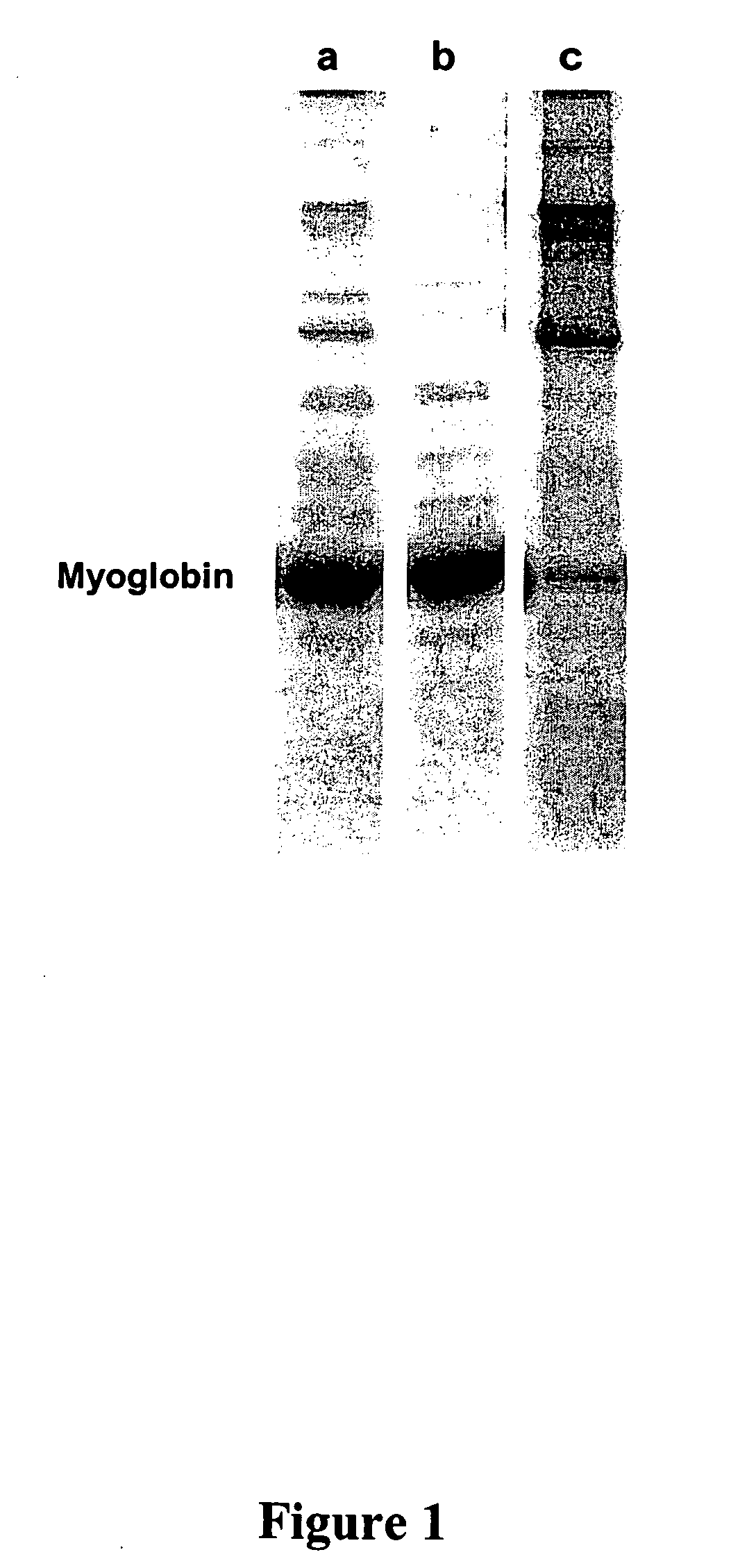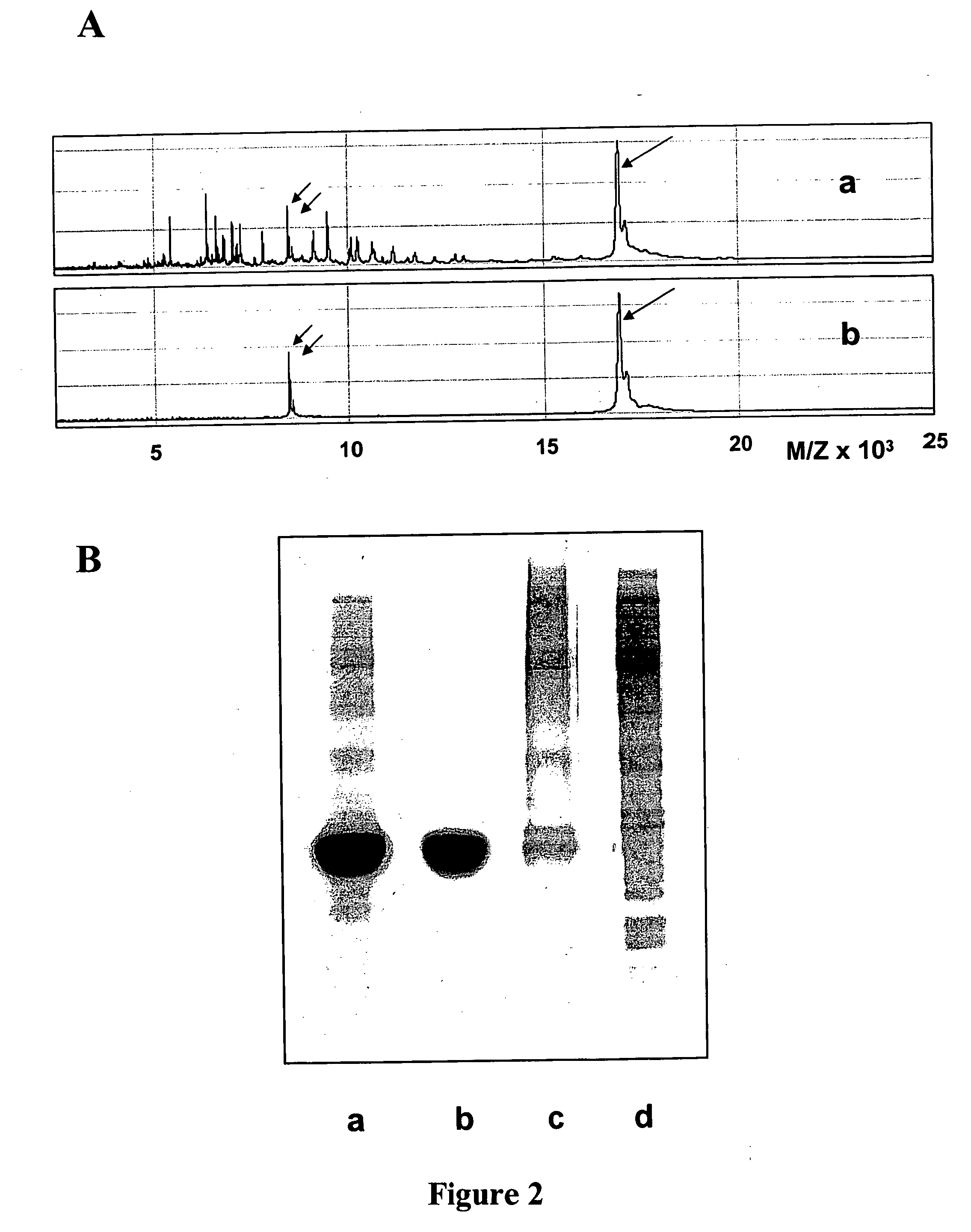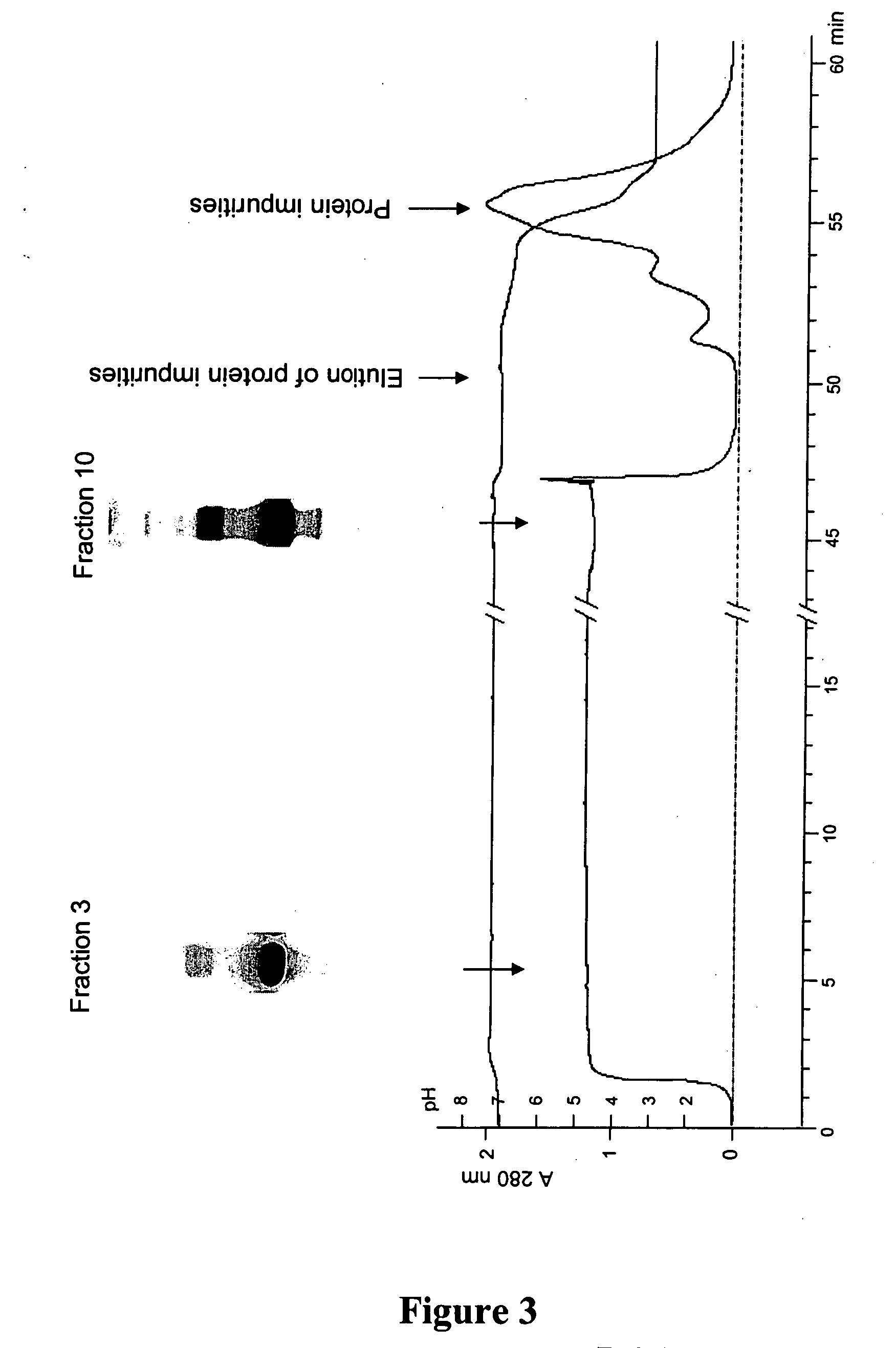Method for purifying proteins
a protein and purification technology, applied in the field of method and protein purification, can solve the problems of increasing the difficulty of using as a human therapeutic, contaminating proteins, and other undesirable impurities, and achieve the effect of increasing the purity of the target protein group
- Summary
- Abstract
- Description
- Claims
- Application Information
AI Technical Summary
Benefits of technology
Problems solved by technology
Method used
Image
Examples
example 1
Separation of Serum Proteins from Purified Myoglobin
[0194] Pure muscle myoglobin (Sigma) was first contaminated with human serum proteins and the resulting mixture, comprising 95% of myoglobin (i.e., the target protein group of interest) and at most 5% of contaminating serum proteins, was then polished using a combinatorial peptide library attached to beads. The combinatorial peptide library comprised about 30,000,000 binding moieties.
[0195] Myoglobin was dissolved at a concentration of 10 mg / ml in a 25 mM phosphate buffer, pH 7.4. To this solution, 5% albumin-depleted human serum proteins (i.e., the contaminating proteins) were added. This corresponds to at most 5% of the myoglobin present in solution. 400 μL protein solution were then mixed with 80 uL of a combinatorial peptide library attached to a solid phase. The suspension was gently shacked for 60 minutes at room temperature. The supernatant (unbound polished myoglobin) was then separated from the proteins bound to the comb...
example 2
Separation of E. coli Proteins from Purified Myoglobin
[0198] Pure muscle myoglobin (Sigma) was first contaminated with soluble E. coli proteins and the resulting mixture, comprising 95% of myoglobin (i.e., the target protein group of interest) and at most 5% of contaminating serum proteins, was then polished using a combinatorial hexapeptide library attached to beads.
[0199] 100 mg of myoglobin were dissolved in 400 μL of a 25 mM phosphate buffer, pH 7.4. To this solution, 5 mg of soluble E. coli proteins (i.e., the contaminating proteins) were added. The resulting solution was then mixed with 80 μL of a combinatorial hexapeptide library attached to a solid phase. The suspension was gently shacked for 20 minutes at room temperature. The supernatant (unbound polished myoglobin) was then separated from the proteins bound to the combinatorial hexapeptide library attached to a solid phase by centrifugation. The solid phase was washed with the phosphate buffer and collected unbound prot...
example 3
Separation of P. pastoris Proteins from Purified Recombinant Human Albumin
[0201] A solution of purified recombinant human albumin (96%) and P. pastoris proteins (4%) at a concentration of 10 mg / mL was prepared in phosphate buffered saline (PBS). Separately 1 mL column of solid phase combinatorial hexapeptide library was packed, equilibrated with PBS and connected to a chromatographic set up comprising a pumping system and UV / pH detection unit for recording both events at the column outlet.
[0202] The column was loaded continuously with the recombinant human albumin / P. pastoris protein solution to be polished at a linear flow rate of 50 cm / hour. The flowthrough was collected by fractions of few mL each to analyze the capability of the solid phase to remove protein impurities likewise a frontal analysis. Once the load was terminated, a PBS solution was introduced for washing out excess of proteins. Collected fractions were then analyzed by SDS-PAGE and mass spectrometry. Results indi...
PUM
| Property | Measurement | Unit |
|---|---|---|
| Fraction | aaaaa | aaaaa |
| Fraction | aaaaa | aaaaa |
| Fraction | aaaaa | aaaaa |
Abstract
Description
Claims
Application Information
 Login to View More
Login to View More - R&D
- Intellectual Property
- Life Sciences
- Materials
- Tech Scout
- Unparalleled Data Quality
- Higher Quality Content
- 60% Fewer Hallucinations
Browse by: Latest US Patents, China's latest patents, Technical Efficacy Thesaurus, Application Domain, Technology Topic, Popular Technical Reports.
© 2025 PatSnap. All rights reserved.Legal|Privacy policy|Modern Slavery Act Transparency Statement|Sitemap|About US| Contact US: help@patsnap.com



